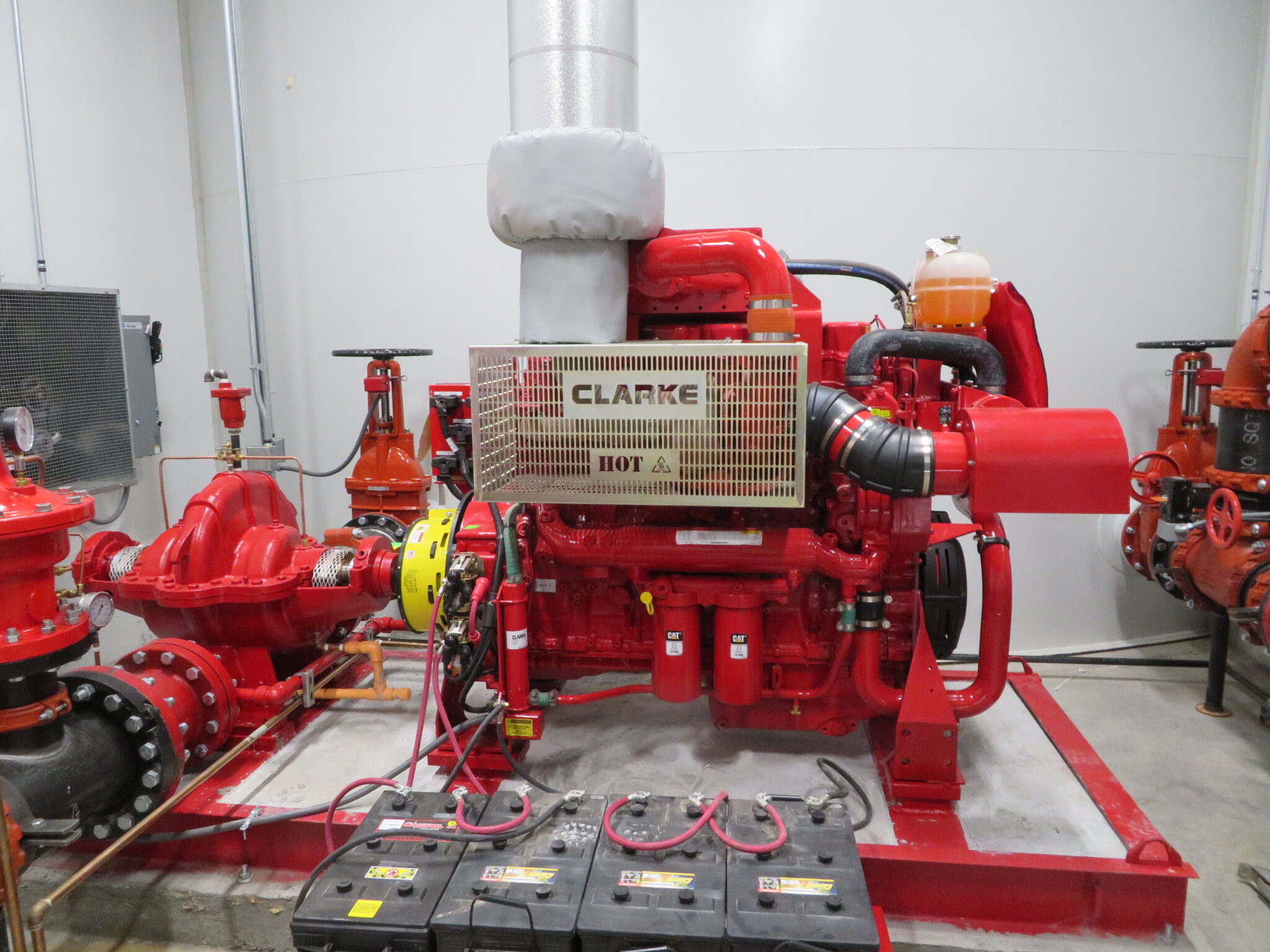

In the fire safety world, the reliability of fire pump systems is critical & the acceptance test for fire pumps is an important step to ensure the functionality & stability of these systems. This month’s “Think Upstream” looks at key testing requirements outlined in the 2022 Edition of NFPA 20, Standard for the Installation of Stationary Pumps for Fire Protection (“NFPA 20”).
- 14.2.6.4 Variable Speed Pumps: §14.2.6.3.1 Variable speed pumps shall be tested at no-flow, 25%, 50%, 75%, 100%, 125%, & 150% of rated load in the variable speed mode. The purpose of this test is to verify the stability of the variable speed feedback mechanism as identified in the annex material.
- 14.2.6.4.1.1 Variable speed pumps shall be tested at no-flow, rated, & peak loads, with the pump operating at rated speed. HGI also requires the pump to be tested at 50 or 75% & 125% to further develop the performance curve. This allows a more through comparison to the certified shop test curve.
- 14.2.6.3.2 The fire protection system shall be isolated & the pressure relief valve closed for the rated speed tests. This is to protect the downstream equipment from the full unregulated pressure of the constant speed churn.
Fire pump vendors often wait until the end of the acceptance test to set the main relief valve. However, per §14.2.6.4.3, The relief valve shall be set & operational during the variable speed test.
- 14.2.6.11 Load Start Test: The fire pump unit shall be started & brought up to rated speed without interruption under conditions of a discharge equal to peak load. This is often but not always at 150% of the pump rated flow, also known as full load start. During the full load start test, we listen for unusual/excessive vibration & for the pump to get to speed smoothly & quickly without the water supply dropping off rapidly.
- 14.2.7.9 The fire pump shall be started once from each power service & run for a minimum of 5 mins. This section includes the following Caution: Manual emergency operation shall be accomplished by manual activation of the emergency handle to the fully latched position in a continuous motion. The handle shall be latched for the duration of this test run. HGI often receives pushback from pump vendors that feel this test is too dangerous or fear the pump will break. We even had one vendor claim it was a one-time use function. Testing the emergency manual handle is a requirement of the acceptance test & always has been.
Unlike electric driven pumps, diesel driven pumps are not required to run for 5 minutes for each start until the total cranking time exceeds 45 seconds. We recommend allowing the engine to come up to speed & run a bit for each run. With modern diesel engines each crank cycle may only be 2 or 3 seconds. The 6 manual & 6 automatic starts can be accomplished without a 5-min run if you schedule the fail to start test at the end of the acceptance test.
Discussing expectations with the fire pump vendor before the test is crucial for a complete understanding & a smooth, efficient test for all involved. Collaborative communication between fire protection professionals & pump vendors is essential to address concerns and achieve a seamless testing process.

